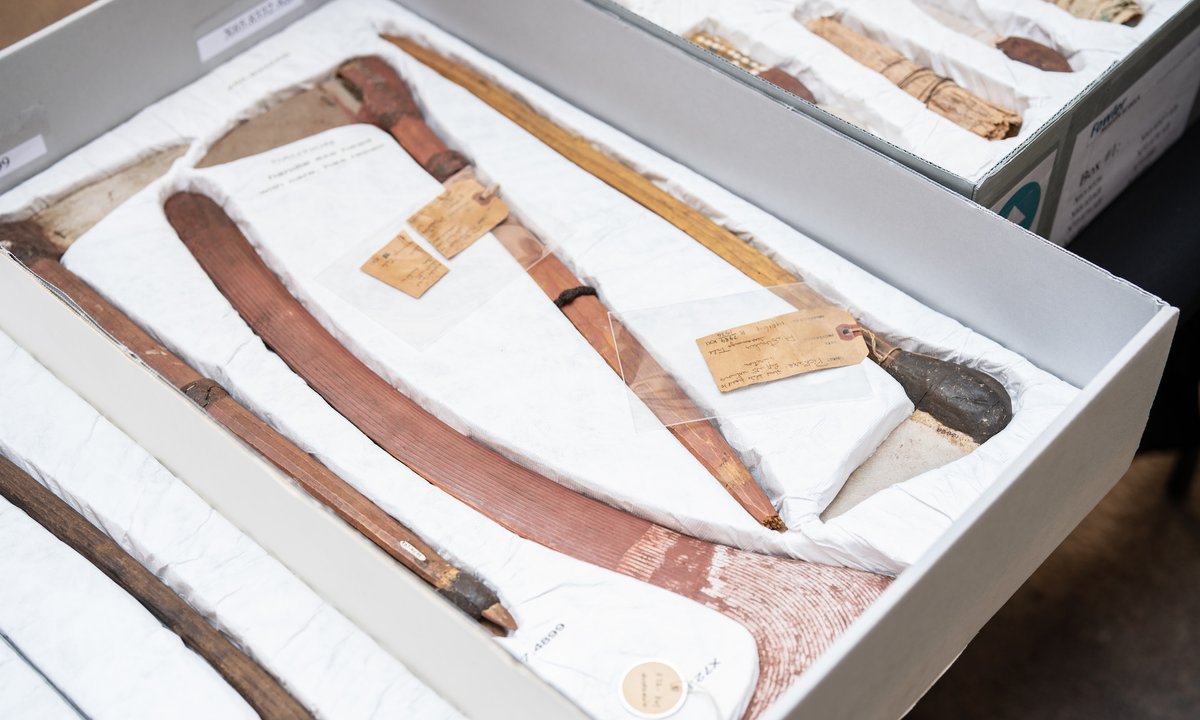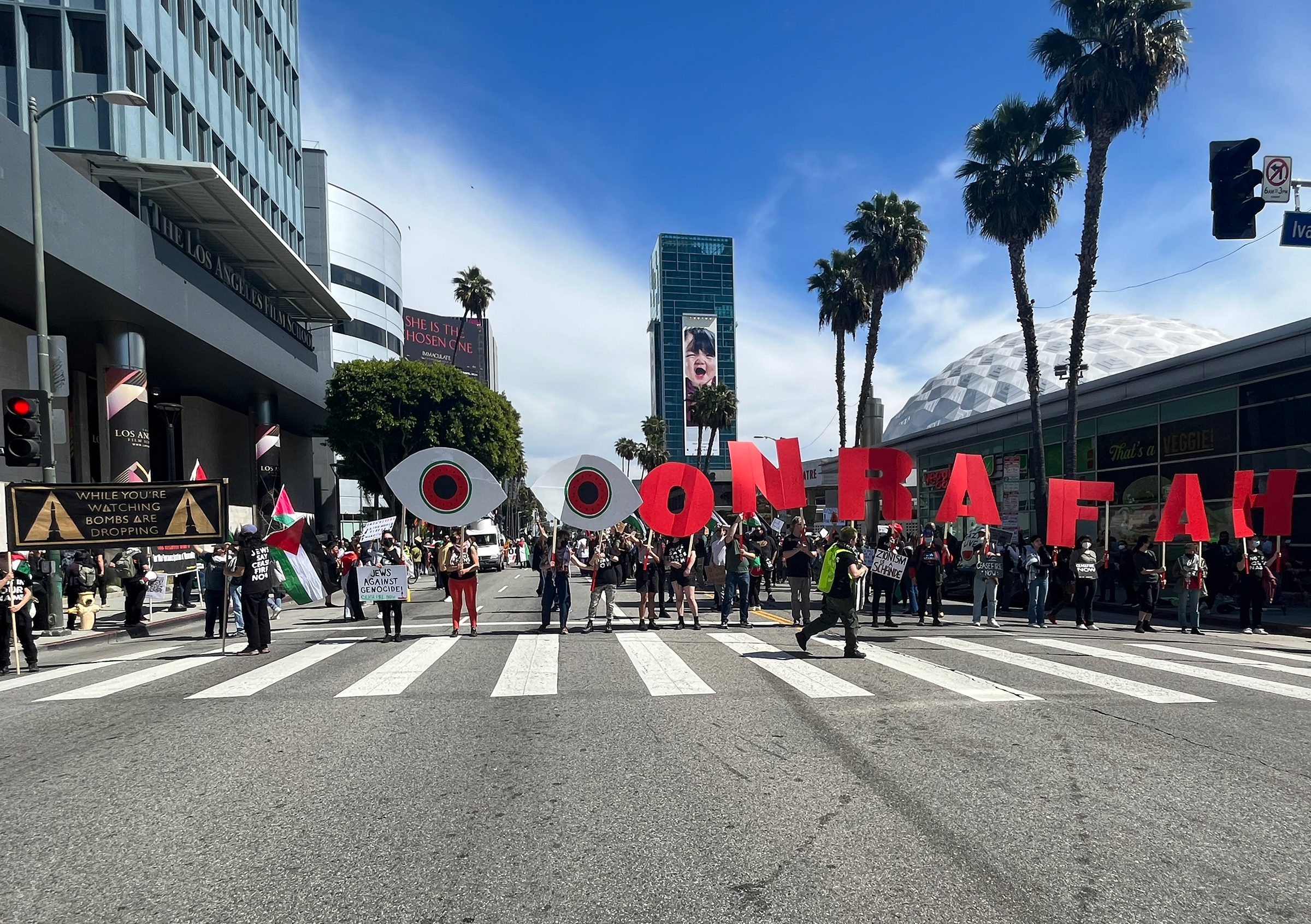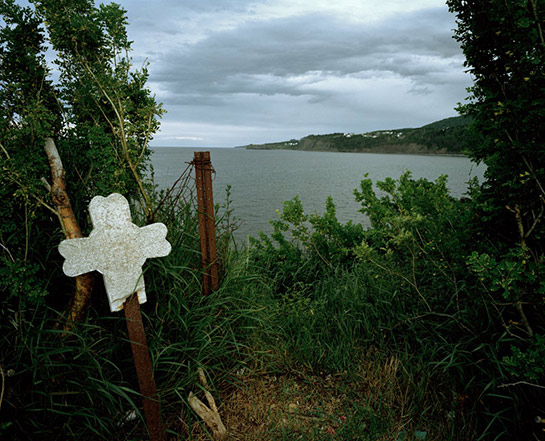On 24 July, the Fowler Museum at the University of California, Los Angeles returned 20 objects to the Warumungu people of Australia’s Northern Territory. The handoff took place at an official ceremony attended by university officials, two Warumungu elders and staff of the Australian Institute of Aboriginal and Torres Strait Islander Studies (AIATSIS)—a government agency that has been slowly but steadily combing the world for Indigenous artefacts that could be repatriated.
There were speeches, signing of documents and group photos in the courtyard of the museum, while most of the repatriated objects sat in fitted boxes behind the speakers. One of the most prized of the items was a wartilykirri (hooked boomerang that looks like the number 7)—a flat, angled tool carved from a single piece of wood and used for hunting, fighting, trading and, when paired, as a percussion instrument. This one was 66cm long with incised lines on the surface that apparently aid in its aerodynamics. Several short knives and their sheaths were in a second box, and three wooden clubs were in a third. All were about a century old.
As the Fowler’s director, Silvia Forni, explains to The Art Newspaper, the case for repatriation was persuasive on several levels. “One of the items that they identified is sacred and restricted and should not be put on display,” she says. (This object was not on display during the handover.) “Other pieces that they requested are secular early examples of items that carry important cultural significance for the community. The elders, via AIATSIS, made a strong case for how these objects would be able to bring back to the community a tangible record of ancestral knowledge. They will be cherished treasures in their community cultural centre.”
The 20 objects are to be crated and sent to AIATSIS headquarters in Canberra, before eventually being shipped to the Nyinkka Nyunyu Arts and Culture Centre in Tennant Creek—after the completion of the organisation’s ongoing A$7m ($4.6m) expansion project.
That should be before the end of the year, says Cliff Plummer Jabarula, one of the Warumungu elders attending the ceremony. Asked about the importance of carrying on culture, he says: “We’re continuing, even though we’ve lost so many elders. You can’t just drop [things] when a senior songman passes away,” an elder who knows the essential narratives of his people through special songs. “You have to continue to carry their legacy,” he says.
Returned objects displayed at the repatriation ceremony at the Fowler Museum at UCLA Photo: David Esquivel/UCLA
AIATSIS is a government agency focused on the history, culture and heritage of the First Peoples of Australia. Six years ago, it set up the Return of Cultural Heritage (RoCH) programme, and began looking at collections worldwide that might have holdings to return. Among the 200 institutions it first contacted, 74 responded positively.
“They were willing to have a conversation,” says Jason Lyons, the director of RoCH and one of the AIATSIS delegates at the ceremony. After reviewing responses, his office contacted the relevant Indigenous leaders to find out whether they would be interested in having their items back. If they did, RoCH would ask the institution about the repatriation of the items. So far, everyone has said yes, Lyons says. (RoCH has since contacted some 180 additional institutions and received more positive responses, allowing it to identify over 126,000 objects that might be repatriated.) In the six years of RoCH’s existence, it has had over 2,100 items returned to 17 communities.
The Fowler was in this first group of responders, sending a list of its Australian Aboriginal holdings. Last year, two AIATSIS staffers came to the museum to examine and confirm the Warumungu objects to be repatriated. Half the items being returned are from a 1965 Wellcome Trust gift to the museum that totalled almost 30,000 objects—a number of which have questionable provenance.
The Fowler has been regularly combing its collection for provenance issues. In 2019, it received a $600,000 grant from the Andrew W. Mellon Foundation to investigate its African art collection—one of the largest in the US—especially objects from the Wellcome Trust. This involved studying some 7,000 pieces. One tangible result has been the return of seven important Asante objects to Ghana—the artefacts were traced to the 19th-century British sacking of the Ashanti Kingdom’s capital during the Sagrenti War.
Fortunately, Forni says, the Australian government pays for the key expenses of the repatriation process—the delegation’s visit, the packing and shipping of the items back to Australia. This makes it all much easier for cash-strapped museums.
Still, it is a slow and time-consuming process, Lyons says. He foresees “decades and decades of work. We’re only just scratching the surface.”



